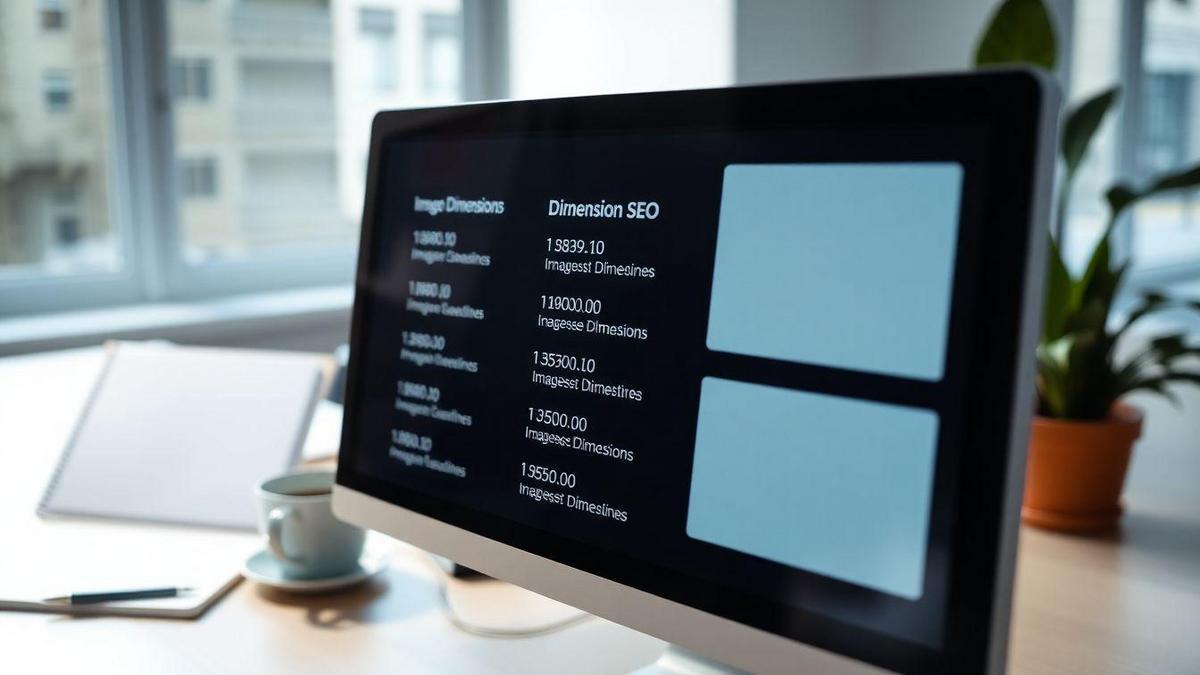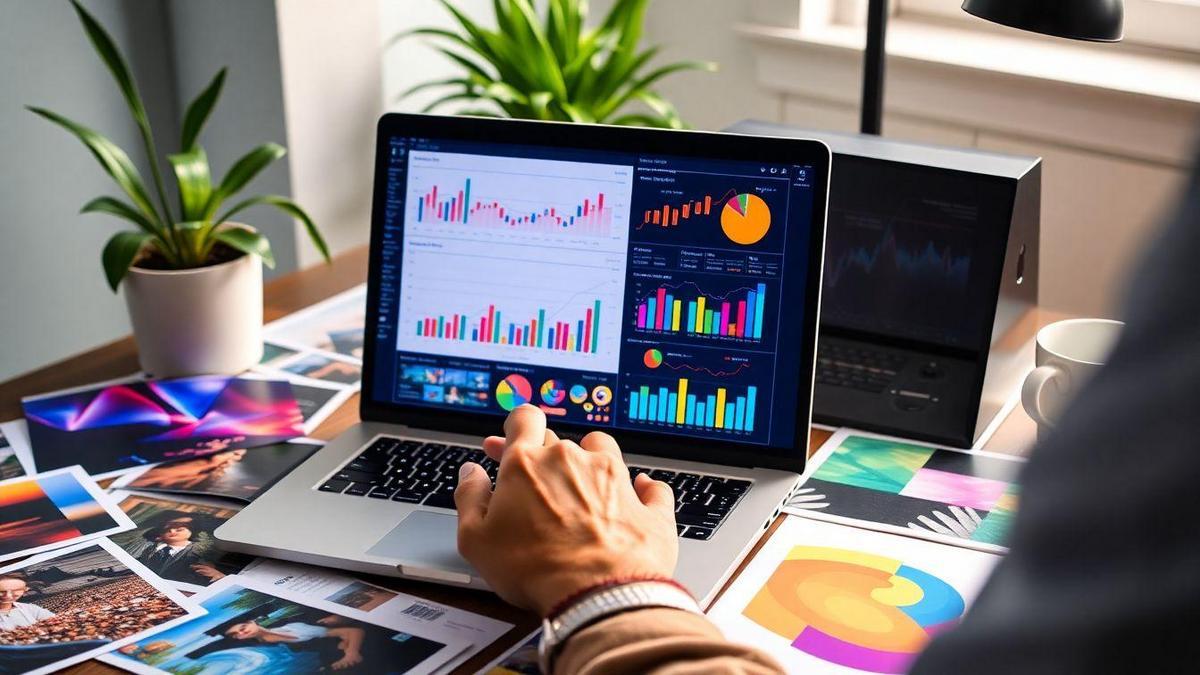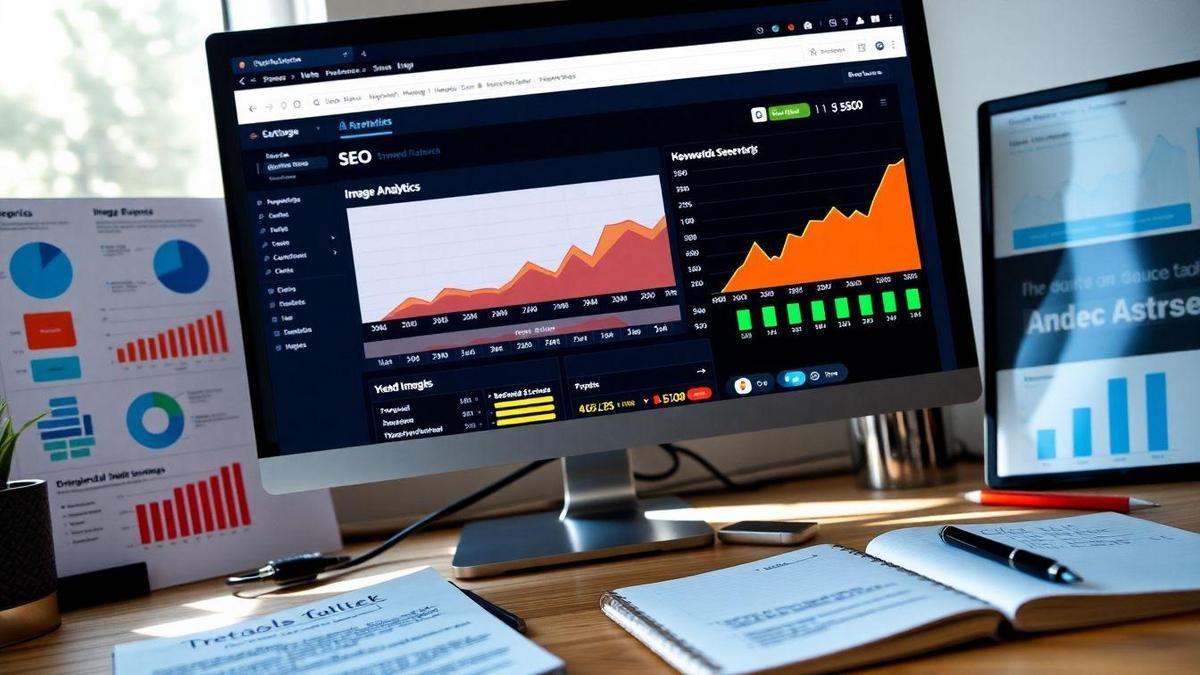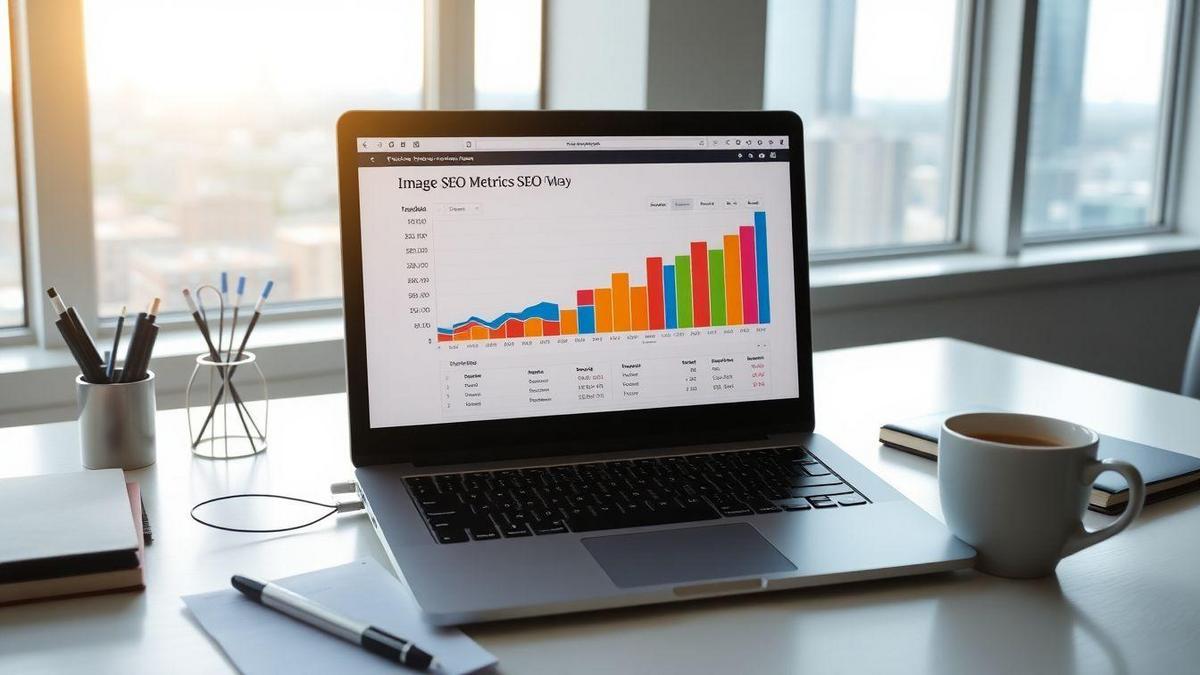Are you ready to dive into Optimized Images: Dimensions, ALT, and Compression? This article is all about making your images work better for you online. You’ll learn why image dimensions are important, how to pick the right sizes, and the power of ALT tags for boosting SEO. We’ll also cover easy image compression tips and the best file formats to use. Plus, we’ll share secrets to keep your images looking great on mobile devices. Let’s jump in and make your images shine!

Understanding Image Dimensions for SEO
Why Image Dimensions Matter
When you think about image dimensions, what comes to mind? You might picture a beautiful photo that catches your eye. But did you know that the size of that image can play a huge role in how your website ranks on search engines? That’s right! If your images are too large, they can slow down your site. A slow site can frustrate visitors and make them leave. On the flip side, if your images are too small, they might look blurry or pixelated, which can turn people away too.
How to Choose the Right Dimensions
Choosing the right dimensions for your images is like picking the right outfit for an occasion. You want to make sure it fits well and looks good! Here’s a simple guide to help you out:
| Type of Image | Recommended Dimensions |
|---|---|
| Blog Post Featured Image | 1200 x 628 pixels |
| Thumbnail Image | 150 x 150 pixels |
| Full-Width Image | 1920 x 1080 pixels |
These sizes are just a starting point, but they can help you make your images look their best.
Tips for Responsive Image Sizes
In today’s world, people view websites on all sorts of devices: phones, tablets, and computers. This means your images need to be responsive. Here are some tips to help you:
- Use CSS: This can help your images adjust to different screen sizes.
- Choose the Right Format: JPEGs are great for photos, while PNGs work well for images with text or logos.
- Test Your Images: Always check how your images look on different devices.
By keeping these tips in mind, you can ensure your images not only look great but also help your site perform better.
The Importance of ALT Tags in Image SEO
What Are ALT Tags?
ALT tags, or alternative text, are short descriptions you add to your images on your website. Think of them as captions that help search engines understand what your image is about. When you upload an image, you should always fill out the ALT tag. This not only helps with SEO but also makes your site more user-friendly.
How ALT Tags Improve Accessibility
Using ALT tags is a big win for accessibility. Imagine someone with a visual impairment trying to browse your site. They might use a screen reader, which reads out the content on the page. If your images have ALT text, the screen reader can describe the image. This way, everyone can enjoy your content, no matter their abilities.
Best Practices for Writing ALT Text
Writing good ALT text is easier than you think! Here are some tips to keep in mind:
- Be Descriptive: Clearly describe what’s in the image. Instead of saying dog, try a golden retriever playing in the park.
- Keep It Short: Aim for a brief description, usually under 125 characters. This keeps it quick and easy to read.
- Avoid Keyword Stuffing: Don’t just cram in keywords. Make sure your description flows naturally.
- Context Matters: Think about the context in which the image appears. How does it relate to the surrounding text?
| Best Practices | Description |
|---|---|
| Be Descriptive | Clearly describe the image. |
| Keep It Short | Aim for under 125 characters. |
| Avoid Keyword Stuffing | Use keywords naturally, not forcefully. |
| Context Matters | Relate the image to the surrounding content. |
By following these practices, your images will not only be more accessible but also help improve your SEO.

Image Compression Techniques to Boost Website Speed
What is Image Compression?
Image compression is the process of reducing the size of your images without losing too much quality. Think of it as squeezing a sponge. You want to get rid of excess water but still keep it functional. By compressing images, you make them easier to load on your website. This means your visitors won’t have to wait long to see your beautiful visuals.
Benefits of Compressing Your Images
There are many benefits to compressing your images. Here’s a quick breakdown:
- Faster Load Times: Compressed images load quicker, making your website speedier.
- Better User Experience: A fast site keeps visitors happy and encourages them to stay longer.
- Improved SEO Rankings: Search engines love fast websites, which can lead to better rankings.
- Reduced Bandwidth Usage: Smaller images use less data, which is great for both you and your visitors.
Tools for Effective Image Compression
Choosing the right tools can make a world of difference. Here’s a handy table of popular image compression tools:
| Tool Name | Features | Best For |
|---|---|---|
| TinyPNG | Lossy compression, easy to use | Web images |
| JPEGmini | Reduces JPEG file size | Photographers |
| ImageOptim | Great for Mac users | Bulk image compression |
| Kraken.io | Supports multiple formats | Developers |
| Compressor.io | Simple interface, multiple formats | General use |
These tools can help you create optimized images that are just the right size without sacrificing quality.
Choosing the Right Image File Formats
Common Image Formats Explained
When you’re putting together a website, picking the right image format is like choosing the right outfit for a big event. Each format has its own strengths and weaknesses. Here’s a quick rundown of the most common image formats you’ll encounter:
| Format | Best For | Pros | Cons |
|---|---|---|---|
| JPEG | Photos | Small file size, great for colorful images | Loses quality when compressed |
| PNG | Graphics with text | High quality, supports transparency | Larger file size |
| GIF | Simple animations | Supports animation, small file size | Limited color range |
| SVG | Logos and icons | Scalable without losing quality | Not suitable for complex images |
When to Use JPEG vs. PNG
Now, let’s get into the nitty-gritty of when to use JPEG and when to opt for PNG.
- JPEG: If you have a photo that’s bursting with colors, JPEG is your go-to. It keeps the file size small, which is great for loading speeds. But remember, it sacrifices some quality when you compress it too much.
- PNG: If you’re dealing with images that have text or need a transparent background, PNG is the way to go. It keeps the details sharp and clear, but be careful—it can take up more space on your server.
Impact of File Formats on SEO
You might wonder how these file formats affect your site’s SEO. Well, it’s pretty simple. Optimized Images: Dimensions, ALT, and Compression play a huge role. Search engines love fast-loading pages. If your images are too large, they can slow down your site, pushing you down in search rankings.
- ALT Text: This is like a secret weapon. It tells search engines what your image is about. Use clear and descriptive ALT text for every image.
- Compression: Don’t forget to compress your images before uploading. This reduces file size without sacrificing quality, helping your site load faster.

Visual Content Optimization for Better Engagement
How Images Affect User Experience
Images play a huge role in how users interact with your content. Think about it: a page filled with text can feel heavy and boring. But sprinkle in some engaging visuals, and suddenly, it’s like a breath of fresh air. They can grab attention, tell a story, and even make complex ideas easier to understand.
When you use images that resonate with your audience, it can lead to longer time spent on your site and lower bounce rates. In fact, studies show that articles with relevant images get 94% more views than those without. So, don’t underestimate the power of a good image!
Tips for Optimizing Visual Content
Now that you know how important images are, let’s dive into how to make them work for you. Here are some simple tips to keep in mind:
- Choose the Right Dimensions: Make sure your images fit the space they’re in. A stretched or squished image can turn users away faster than a bad joke.
- Use ALT Text: This is a little description of your image. It helps search engines understand what’s in the picture and can boost your SEO. Plus, it’s great for accessibility!
- Compress Your Images: Large images can slow down your site. Use tools to reduce file sizes without losing quality. This keeps your site speedy and user-friendly.
Here’s a quick table to help you remember:
| Tip | Why It Matters |
|---|---|
| Right Dimensions | Keeps images looking sharp and clear |
| ALT Text | Helps with SEO and accessibility |
| Compression | Speeds up your site for better user experience |
Balancing Quality and Load Time
Finding the sweet spot between image quality and load time is key. You want your images to look great, but you also don’t want users waiting ages for them to load. A good rule of thumb is to aim for a balance.
Try using formats like JPEG for photos and PNG for graphics. They offer good quality while keeping file sizes manageable. Remember, if your site takes too long to load, visitors might just pack their bags and leave!
The Role of Optimized Images in Mobile SEO
Why Mobile Optimization is Key
Imagine this: you’re browsing on your phone, and a website takes forever to load. Frustrating, right? That’s why mobile optimization is super important. With more people using their phones to surf the web, having a site that works well on mobile is not just a nice-to-have—it’s a must! Search engines like Google pay close attention to how your site performs on mobile devices. If your site is slow or hard to navigate, it could drop in rankings. So, making optimized images a priority can help keep your site fast and user-friendly.
Adapting Images for Mobile Devices
When it comes to images, size matters! Large images can slow down your site, especially on mobile. You want your images to look good but also load quickly. This is where optimized images come into play. Think about it like packing for a trip: you wouldn’t carry a huge suitcase if you only need a few outfits, right? The same goes for your images.
Here’s a quick look at what you should consider for your images:
| Aspect | What to Do |
|---|---|
| Dimensions | Resize images to fit mobile screens. |
| ALT Text | Use descriptive ALT text for accessibility. |
| Compression | Compress images to reduce file size. |
Strategies for Responsive Images
Now, let’s dive into some strategies to make your images responsive. You want your images to adjust based on the screen size. Here are a few tips to help you out:
- Use Flexible Image Sizes: Make sure your images can shrink or grow depending on the device.
- Choose the Right Format: JPEGs are great for photos, while PNGs work better for graphics with fewer colors.
- Implement Lazy Loading: This technique loads images only when they are needed, speeding up your site.
By following these strategies, you can make sure that your images not only look fantastic but also help your site perform better on mobile devices.

SEO Image Optimization Techniques You Should Know
How to Optimize Images for Search Engines
Optimizing images is crucial for your website’s SEO. When you add images, you want them to help your site rank higher. Here’s how you can do it:
- Choose the Right Format: Use JPEG for photos and PNG for graphics. This keeps your images sharp without making your site slow.
- Use Descriptive File Names: Instead of “IMG_1234.jpg,” use “blue-widget.jpg.” This tells search engines what the image is about.
- Add ALT Text: This is a short description of your image. It helps search engines understand the content and is useful for visually impaired users. For example, instead of “image1,” write “a blue widget on a table.”
- Compress Your Images: Large images can slow down your site. Use tools like TinyPNG or ImageOptim to reduce file size without losing quality.
The Connection Between Images and SEO Rankings
Did you know that images can impact your SEO rankings? Search engines love fresh and relevant content. When you add optimized images, it can boost your visibility. Here’s a quick look at how images relate to SEO:
| Factor | Impact on SEO |
|---|---|
| Image Quality | Better quality can keep visitors on your site longer. |
| File Size | Smaller sizes load faster, improving user experience. |
| ALT Text | Helps search engines index your images correctly. |
| Image Relevance | Relevant images can increase your click-through rates. |
When you use images that match your text, it helps search engines make sense of your content. This can lead to higher rankings and more visitors.
Regularly Updating Your Image SEO
Just like you update your blog posts, you should also refresh your images. Regular updates keep your content fresh and relevant. Here’s what to do:
- Check Your ALT Text: Make sure it still fits your content.
- Replace Old Images: If you have new, better images, swap them out.
- Review File Names: As your content evolves, your image names should too.
By keeping your images up to date, you not only improve your SEO but also keep your audience engaged.
The Impact of Image Size on Website Performance
How Large Images Slow Down Your Site
Let’s face it: large images can be a real pain when it comes to your website’s speed. Imagine clicking on a website, and you’re left staring at a blank screen, waiting for those hefty images to load. Frustrating, right?
When you use oversized images, they take longer to download. This can lead to a slow user experience, and that’s something you definitely want to avoid. Studies show that slow-loading pages can cause visitors to leave your site. In fact, 47% of users expect a webpage to load in 2 seconds or less. If it takes longer, they might just bounce away.
Finding the Right Balance for Speed
So, how do you find that sweet spot? You want your images to look great but also load quickly. Here are some tips to help you achieve that balance:
- Resize your images: Before uploading, make sure your images are the right size. You don’t need a massive file if it’s just going to be a small thumbnail.
- Use the right format: JPEGs are great for photos, while PNGs are better for images with text or transparency.
- Compress your images: Tools like TinyPNG or ImageOptim can help reduce the file size without sacrificing quality.
Here’s a quick comparison of image formats and their typical file sizes:
| Image Format | Ideal Use | Average Size (KB) |
|---|---|---|
| JPEG | Photographs | 100-300 |
| PNG | Graphics/Text | 50-150 |
| GIF | Simple Animations | 20-100 |
Monitoring Your Website’s Image Performance
Once you’ve optimized your images, it’s important to keep an eye on how they perform. You can use tools like Google PageSpeed Insights or GTmetrix to see how your images are affecting your site’s speed.
Regularly checking your site’s performance can help you catch any issues early. If your images are slowing things down, you’ll want to take action fast. Remember, a speedy site not only keeps users happy but also helps with your SEO rankings.

Analyzing Your Image SEO Success
Tools for Tracking Image Performance
When it comes to checking how well your images are doing, you’ve got some handy tools at your fingertips. Tools like Google Analytics and Google Search Console can help you see how your images are performing. They provide insights on clicks, impressions, and how many people are finding your images through search.
Here’s a quick look at some tools you can use:
| Tool | Purpose |
|---|---|
| Google Analytics | Track image traffic and user behavior |
| Google Search Console | Monitor search performance of images |
| SEMrush | Analyze image SEO and competitor images |
| Moz | Check image optimization and performance |
Understanding Analytics for Images
Now, let’s break down what those numbers mean. When you look at your image analytics, focus on a few key things:
- Clicks: How many people clicked on your image? This shows if your image is eye-catching.
- Impressions: How often did your image show up in search results? This tells you about visibility.
- Bounce Rate: If people click your image but leave quickly, it’s a sign your image might not be relevant.
By understanding these metrics, you can see where your images shine and where they need a little boost.
Making Adjustments Based on Data
Once you’ve gathered your data, it’s time to roll up your sleeves and make some changes. Here are a few adjustments you can consider:
- Optimize Images: Check if your images are the right size. Large images can slow down your site.
- Update ALT Text: Make sure your ALT tags are descriptive. This helps search engines understand what your image is about.
- Compress Images: Use tools to compress your images without losing quality. This will help your site load faster.
By making these tweaks based on your data, you’ll be on your way to having optimized images that draw in more traffic.
Frequently Asked Questions
What are optimized images?
Optimized images are pictures that load quickly and look great. They are adjusted for size, quality, and format.
Why is image dimension important?
Image dimensions matter because they affect loading speed. Smaller images load faster, making your site more user-friendly.
What is an ALT tag?
An ALT tag describes your image. It helps search engines understand what the image is about and improves accessibility.
How does image compression work?
Image compression reduces file size without losing quality. This makes your images load faster on websites.
How can I optimize my images?
You can optimize images by resizing them, adding ALT tags, and using compression tools. This helps with Optimized Images: Dimensions, ALT, and Compression.

Marina is a passionate web designer who loves creating fluid and beautiful digital experiences. She works with WordPress, Elementor, and Webflow to create fast, functional, and visually stunning websites. At ReviewWebmaster.com, she writes about tools, design trends, and practical tutorials for creators of all levels.
Types of articles she writes:
“WordPress vs. Webflow: Which is Best for Your Project?”
“How to Create a Visually Stunning Website Without Hope”
“Top Landing Page Design Trends for 2025”
Why it works:
She brings a creative, accessible, and beginner-friendly perspective to the blog, perfectly complementing Lucas’s more technical and data-driven approach.
